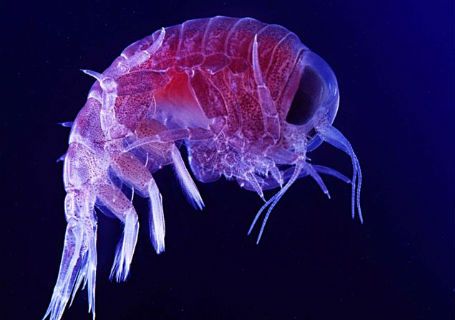Nocturnal migratory birds perceive the nocturnal magnetic field thanks to a protein residing in their eyes
He is about to end up run over, his mother saves himNocturnal migratory birds perceive the magnetic field thanks to a protein residing in their eyes. The discovery, the work of a research group from the universities of Oxford (United Kingdom) and Oldenburg (Germany), places an important extra piece on the understanding of the migrations of these extraordinary animals that sometimes cross the entire planet.
In the eyes of some birds, such as European robins, there is a protein that guides them in the course of migration: it is called cryptochrome 4, it is found in the retina, and gives these animals a certain "sense of sense", that is, a real ability to perceive the earth's magnetic field, with which they are able to find, for example, their nests after migrations, sometimes from one end of the planet to the other.
The Oldenburg researchers successfully extracted the genetic code for cryptochrome 4 in nocturnal migratory European robins and then reproduced the molecule in large quantities using appropriately modified bacterial cell cultures.
The Oxford colleagues then used MRI and novel optical techniques to study this protein, demonstrating its own pronounced sensitivity to magnetic fields. This property would be generated by electron transfer reactions triggered by the absorption of blue light.
Like all proteins, cryptochrome 4 is made up of amino acid chains and robin in particular has 527, of which 4, called tryptophans, appear to be essential for the molecule's magnetic properties.
Based on preliminary computer calculations, the scientists hypothesized that electrons "jumped" from one tryptophan to another, generating magnetically sensitive radical pairs. For experimental verification, Oldenburg's team produced slightly modified versions of robin's cryptochrome, in which each of the tryptophans in turn was replaced by a different amino acid to block the movement of electrons. And so it was.
That migratory birds moved following the Earth's magnetic field had already been widely proposed and taken "almost for granted", so much so that the shift of the magnetic poles of the last decades, according to various researches, is causing important problems for navigation and wildlife migration.
Read also: The MAGNETIC POLE moves faster and faster: all the CONSEQUENCES

©bolina/123rf
But now we know a lot more.
We believe these results are very important because they show, for the first time, that a molecule of the visual apparatus of a migratory bird is sensitive to magnetic fields.
spiega Henrik Mouritsen, coauthor del lavoro.
The work does not yet prove that what happens in the lab is exactly what happens in the eyes of birds, but the authors think the proteins involved could be significantly more sensitive in their native environment.
In fact, in the cells of the retina, the proteins are probably fixed and aligned, increasing their sensitivity to the direction of the magnetic field. They are also likely to be associated with other proteins that could amplify sensory signals. The search for these still unknown interaction partners has begun.
Meanwhile - no small feat - these results show, for the first time, that one molecule of the visual apparatus of a migratory bird is sensitive to the magnetic field.
If we can prove that cryptochrome 4 is the magnetic sensor - adds Peter Hore, who collaborated in the study - we will have demonstrated a fundamentally quantum mechanism that makes animals sensitive to environmental stimuli. a million times weaker than was believed.
The work was published in Nature.
Sources: Oxford University / Nature
Read also:
- Less lighting and more trees instead of concrete: so cities can save migratory birds
- The extraordinary flight of the cuckoo that surprises even scientists: it is one of the longest migrations


























